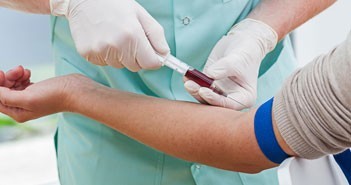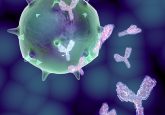What is the future of DBS?

Dried blood spot (DBS), though having been used for infant screening for many years in the clinical diagnostics area, is an available tool and is only being recently explored by the bioanalytical community. Yet, in the last several years it has generated much debate, not only among the pharmaceutical companies but also within the regulatory bodies.
This survey, quite timely, accurately reflects the current diversified and sometimes confused views of DBS in the bioanalytical community. While a few brave pioneers applied DBS for regulated GLP and bioequivalence studies, most practitioners are either at learning/early adoption or selective use stages, or some even at a skeptical phase of this technology.
DBS is being recognized and is also included as an example in the new technology section of the recent FDA draft guidance for bioanalytical method validation. It calls for comparative studies with plasma, performed for DBS and other established technologies, as stated by FDA in several previous meetings. This added burden of conducting comparative studies makes many hesitant to adopt this technology. The survey certainly reflects the confusing and conflicting messages that the bioanalytical community received from the various regulatory bodies.
The merits of using DBS are well documented in the literature, however so are clear scientific issues such as impact of hematocrit, changes on spot homogeneity, extraction recovery, long term stability/recovery etc. Some more technical challenges include addition of internal standard, drying process, dilution integrity, incurred sample reanalysis, just to name a few, which are never concerns for conventional plasma assays. The nature of paper-based cards, along with dried matrix, presents some unique challenges for DBS-based bioanalysis.
None of these technical or scientific issues are unresolvable, although longer time may be needed in comparison with plasma assays. Therefore, careful planning would be needed to avoid shifting bioanalysis back to the critical path of the program development.
In our laboratory, we have observed the time-dependent extraction recovery upon the storage of the DBS cards. A method that was optimized and validated using relatively fresh QCs (within a few days) were no longer appropriate to be used for analyzing incurred samples. There are certainly other parameters that need to be carefully considered, evaluated and mitigated if they posed negative impacts to the DBS methods. Otherwise, method development timelines could be shifted upstream significantly, a task not easy to implement at today’s resource tight bioanalytical laboratories.
The last comment we would like to make is that, in our opinions, DBS attracted unnecessary attentions from the bioanalytical community, with a high but unrealistic hope it would replace plasma as the PK sampling matrix. Unfortunately, even with many merits of DBS, this technology would be much better off today to be positioned as a supplementary tool but not as a replacement technology.
DBS can find its niche and can be very valuable for some studies. Examples may include pediatric studies with limited sample volumes, drug candidates that are intended for developing countries where classic blood drawing may be a challenge, drugs/metabolites that are labile in plasma matrix but stable in DBS, and many of the early non-clinical studies. As a supplementary tool and with appropriate method validation, DBS may have the potential to reduce the study cost and facilitate a healthy dialogue with the regulatory bodies.






